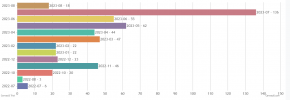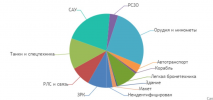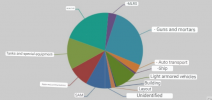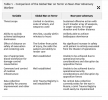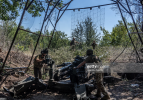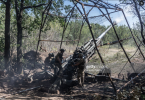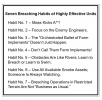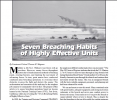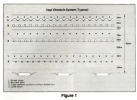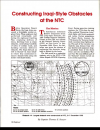John Hudson
July 26, 2023 at 1:00 a.m. EDT
LVIV, Ukraine — In an open test field in rural Ukraine, a drone equipped with a bomb lost connection with its human operator after coming under attack by electronic jamming equipment — but instead of crashing to the ground, the drone accelerated toward its target and destroyed it.
The drone avoided the fate of thousands of other uncrewed aircraft in this war by relying on new artificial intelligence software that accounts for the electronic interference now commonly deployed by Russia, stabilizing the drone and keeping it locked on a preselected target. AI capabilities help the drone complete its mission even if its target moves, representing a significant upgrade from existing drones that track specific coordinates.
Such AI technology, under development by a growing number of Ukrainian drone companies, is one of several innovative leaps underway in Kyiv’s domestic drone market that are accelerating and democratizing the lethality of unmanned warfare — especially crucial for Ukraine’s outgunned military, which is fighting a larger and better-equipped Russian enemy.
The improvements in speed, flight range, payload capacity and other capabilities are having an immediate impact on the battlefield, enabling Ukraine to destroy Russian vehicles, blow up surveillance posts and even wreck parts of Russian President Vladimir Putin’s prized Crimean Bridge in an operation last week involving explosive-laden naval drones.
The design and software innovations, as well as mass dissemination of piloting know-how, are also likely to influence the way drones are used far beyond the war in Ukraine, with serious implications for governments confronting separatist militias, drug cartels and extremist groups seeking to gain a technological edge.
“With tens of thousands of people going through drone training on both sides of this war, it is very likely that this experience is spreading far and wide, including to nefarious actors,” said Samuel Bendett, a Russia-focused drone expert at CNA, a Washington-based think tank.
Ukraine, which is known for agriculture and other heavy industry, is not an obvious setting for drone innovation. The exigencies of war, however, have turned the country into a kind of super lab of invention, attracting investment from vaunted business luminaries including former Google chief executive Eric Schmidt. More than 200 Ukrainian companies involved in drone production are now working hand-in-glove with military units on the front lines to tweak and augment drones to improve their ability to kill and spy on the enemy.
“This is a 24/7 technology race,” Ukrainian Deputy Prime Minister Mykhailo Fedorov said in an interview at his office in Kyiv, the capital. “The challenge is that every product in every category must be changed daily to gain an advantage.”
Fedorov, 32, is in charge of Ukraine’s “Army of Drones” program, an effort to maximize Kyiv’s use of reconnaissance and attack drones to offset Russia’s big advantage in air and artillery power.
The program has assisted private companies in training more than 10,000 drone operators in the past year, with the goal of training an additional 10,000 over the next six months.
Russia’s air force is estimated to be 10 times larger than Ukraine’s, but Kyiv has kept much of it grounded after shooting down several fighter jets in the opening days of the conflict. Drones have allowed Ukraine to surveil and hit sensitive targets far behind enemy lines while improving the accuracy of its conventional artillery.
Drones have far less firepower than fighter jets, however, which is why Kyiv has requested F-16s and other big-ticket items such as ATACMS (shorthand for Army Tactical Missile System) long-range missile systems. In the meantime, cultivating a domestic drone industry is a top priority.
Fedorov’s team fast-tracks drone procurement contracts between the companies and the Defense Ministry, shortening a process “from two years to two months,” said Dmytro Kovalchuk, a co-founder of the Kyiv-based drone maker Warbirds of Ukraine who has benefited from the streamlined process.
Ukraine’s Defense Ministry, meanwhile, has shared Russian jamming technology with the drone companies, allowing them to test their products against some of the world’s most sophisticated electronic warfare weapons — a privilege the vast majority of international drone companies do not have.
“In the West, you cannot just fire up a jammer and interfere with big parts of the spectrum just to test your product,” said Andrey Liscovich, a former Uber executive who left Silicon Valley to aid Ukraine’s war effort. “You need a special license, and even when you have it, it only applies to a narrow cordoned-off area.”
“That’s why this is one of the areas that Ukraine has a very real opportunity to develop a world-class solution,” Liscovich said.
Drone makers are also receiving constant feedback from the front lines, allowing them to make immediate adjustments to reduce vulnerabilities and improve lethality. “Solving for the end user is one of the most challenging and important problems,” Liscovich said.
Russia, which was slow to realize the importance of offensive drones in the conflict, has recently responded by building a volunteer drone army of its own and introducing new electronic jamming weapons into the field. Its use of self-detonating drones, including the ZALA Lancet and the Iranian-made Shahed, has menaced Ukraine’s cities and blunted Ukraine’s slow-churning counteroffensive.
Ukraine estimates that Russia is destroying about 1,000 Ukrainian drones per month, Fedorov said. Other estimates put the loss rate at 10,000 per month, pushing Kyiv to find ways to increase production of uncrewed aerial vehicles (UAVs), in what has quickly become the largest drone war in history.
The types of drones under development in Ukraine run the gamut.
In an idyllic field of tall sunflowers outside Kyiv, employees of drone maker UA Dynamics ran a test of the Punisher, a whisper-quiet attack drone with a thin frame that is difficult to spot in the sky. During the exercise, the drone dropped a 5½-pound dummy payload a few feet away from a group of unsuspecting test observers who were caught off guard because of the machine’s almost silent motor. The company is building a new attack drone it says can carry four such payloads, totaling about 22 pounds, said Max Subbotin, a company spokesman.
In the western city of Lviv, engineers with Twist Robotics presented test videos of their AI-powered software, which could provide a major upgrade for Ukraine’s arsenal of First Person View, or FPV, drones. The inexpensive UAVs, which Ukraine produces thousands of every month, can carry bombs but are vulnerable to Russian jamming. The new AI-powered targeting, however, allows the FPV to stay locked on its target even if the craft loses contact with the human operator because of jamming or the presence of a large physical object such as a hill, said Rostyslav Olenchyn, a co-founder of Twist Robotics.
“After the target is locked, the drone is guided by this system,” Olenchyn said. The drone’s sensors recognize the target’s physical features and adjust the craft’s trajectory accordingly.
“It’s a poor man’s Javelin,” said an engineer for Twist Robotics, referring to the American-made, shoulder-fired missile to illustrate how FPV drones can substitute for conventional weapons that are often a scarce resource for Ukraine’s military.
Schmidt, the former Google executive, is bullish on Ukraine’s domestic drone market and has committed $10 million alongside other investors into D3, a Ukrainian start-up accelerator that invests in drones and other defense technology.
“Ukraine has continually out-innovated the enemy,” Schmidt wrote in a column for the Wall Street Journal earlier this month after returning from a recent trip to the country.
Schmidt, who has advised the Pentagon on AI technology, hailed Ukrainian advances in drone technology, including AI software and UAVs that operate without GPS guidance. He shared his belief that drones would play a decisive future role by land, air and sea in demining fields and forming “ruthless swarms of AI-empowered kamikaze drones.”
“The future of war will be dictated and waged by drones,” Schmidt concluded.
Schmidt, who met with Ukraine’s defense minister during another visit to the country last fall, is believed to be interested in contributing millions of dollars in Ukraine to scale up the manufacturing of drones, people familiar with the matter said. A spokeswoman for Schmidt declined to comment.
The acceleration of drone technology has worried security experts given the growing number of non-state actors that have used UAVs for lethal purposes, including Hezbollah in Lebanon, the Houthis in Yemen, the Islamic State in Iraq and Syria, and Mexico-based drug cartels.
But while the cost of building an airplane-size drone like an MQ-9 Reaper is beyond the capabilities of such groups, obtaining and utilizing AI-assisted drone software is not.
“Once that software has been developed, it’s effectively costless for that software to proliferate and be reused elsewhere,” said Paul Scharre, a drone expert at the Center for a New American Security and the author of the book “Four Battlegrounds: Power in the Age of Artificial Intelligence.” “It’s really easy for non-state actors to go online, obtain the software and repurpose it.”
Major military powers have long grappled with the ethics of allowing machines to use lethal force in combat. President Biden’s top military adviser, Gen. Mark A. Milley, has said the United States requires that “humans” remain in the “decision-making loop,” and recently called on other major militaries to adopt the same standards.
The new targeting technology still requires the human operator to select the target, said Kovalchuk, whose drone company also uses the AI software. But once the selection happens, the drone pursues the target and releases the munition — resulting in a gap between the human decision and the lethal act.
Ukrainians who have tested the new software insist that the machine’s role is limited and “acceptable,” Kovalchuk said. “We’re not targeting civilians,” he said. “And we consider a mistake of five to 10 meters acceptable.”
Fedorov conceded that the spread of AI technology represents a “threat to the future,” but underscored that Kyiv must prioritize its immediate fight for survival.
The Ukraine conflict is also giving rise to much less sophisticated methods for weaponizing drones.
Each Ukrainian brigade, for instance, is equipped with a 3D printer that troops use to build the mechanism that holds and releases bombs from commercially available drones. The process is easily replicable, experts say.
“Manuals are being published in both Russian and Ukrainian on how to fly a drone, operate a quadcopter and avoid detection,” Bendett said. “Can nefarious actors worldwide use this experience and technology? Absolutely.”
But while technologists have marveled at the innovation happening in Ukraine’s drone space, some caution that it is not a panacea for Kyiv’s daunting military challenges.
Liscovich, the former Uber executive, said Ukraine’s attack drones are unlikely to provide a decisive advantage in the counteroffensive because of their limited range and payload size, and the uneven terrain across many miles of dense Russian minefields and trenches.
Instead, he said, Ukraine’s spy drones hold the most promise for giving Kyiv an edge. “Reconnaissance drones act as a direct multiplier on the efficacy of nearly all weapons in Ukraine’s arsenal, especially artillery, providing the greatest immediate leverage on the battlefield,” he said.
David L. Stern and Isabelle Khurshudyan in Kyiv and Alex Horton in Washington contributed to this report.



